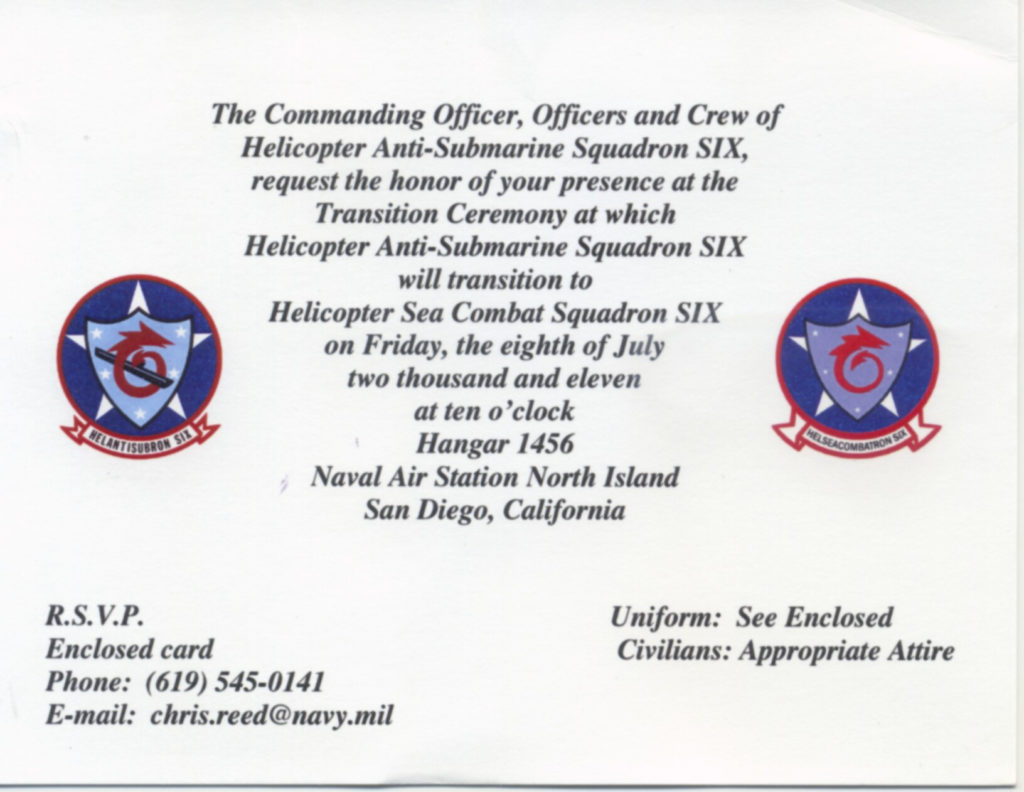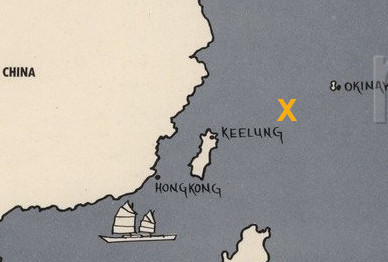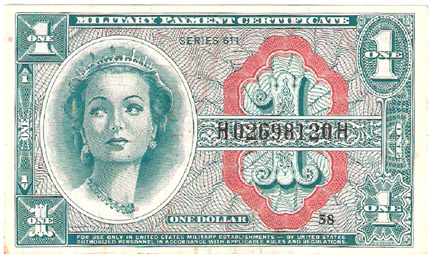Our History
In the Beginning
Helicopter Antisubmarine Squadron Six was commissioned on 1 June, 1956, aboard USS Princeton (CVS-37) midway between the islands of Formosa and Okinawa with Lcdr Dougal D. McKay, USN, as the acting Commanding Officer. The not-yet-a-squadron departed San Diego on 5 January, 1956, as HS-2 Detachment “Nan” ( the old phonetic pronunciation for what we now call “November”). At the time of commissioning the new squadron was equipped with HO4S helicopters. Shortly after its return to NAAS Ream Field in early August 1956, HS-6 began its transitioned to the SH-34 (then known as the HSS-1) and gained a new primary mission; antisubmarine warfare in response to the emerging threat poised by nuclear-powered submarines and cruise missiles. HS-6’s first Change of Command ceremony occurred 24 August 1956 when Cdr Ernest C. Harris, Jr., USN, assumed command of the squadron. Executive Officer Cdr Hugh F. McLinden reported for duty in September 1956.

HS-6 Plank Owners
A plankowner is an individual who was a member of the crew of a United States Navy ship or United States Coast Guard Cutter when that ship was placed in commission. Originally, this term applied only to crew members that were present at the ship’s first commissioning. Today, however, plankowner is often applied to members of newly commissioned units, new military bases and recommissioning crews as well. – Wikipedia
Our Commanding Officers
These are the men who led us through the good times and the bad times, in war and in peace. The aircraft changed over time from piston power to turbines, from daylight only ASW ops to all-weather capable airframes. Squadron manning grew and shrunk but the one constant was having a CO to lead us.


Our Deployments
It all started at “X marks the spot.” Over the years, beginning in 1956 when HS-6 was established as a squadron aboard the USS Princeton, the squadron has deployed on numerous ships from straight deck WWII carriers to the newest nuclear super carriers. During these deployments HS-6 primarily flew only four helicopters, but many variations/modifications of those helos. The squadron has been a part of numerous Air Groups/Air Wings and defended the US in almost every ocean on the planet.
Operations
There’s practically no limit to the various operations HS-6 was involved in over the years: rescuing Soviet sailors adrift at sea, recovering astronauts, rescuing down pilots in combat zones, supporting the Commander-in-Chief during visits to Allied Nations, supporting rescue efforts after a US Navy ship is sunk, looking for survivors after an airliner ditches at sea, flying Medivac missions… and the list goes on and on. Here’s a deeper look at those and many other missions HS-6 carried out for nearly 60 years.


Port Calls
Since HS-6 was deployed aboard ships in nearly every ocean on the planet it stands to reason that we also made port visits and we had Liberty Call around the world as well. For almost 15 years HS-6 deployed aboard US Navy aircraft carriers dedicated primarily to Anti-Submarine Warfare operating in the Pacific Ocean and we visited ports throughout the Western Pacific. When those WWII vintage carriers were removed from service, HS-6 began deploying on both East and West Coast carriers and began visiting ports throughout the world. We were truly world travelers.